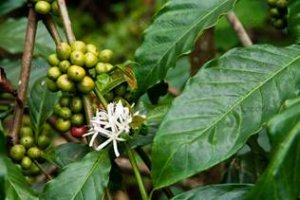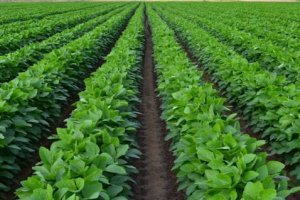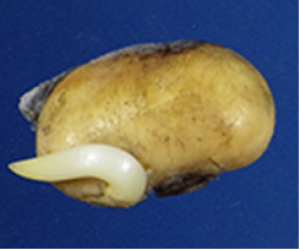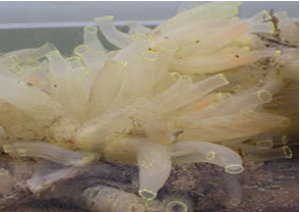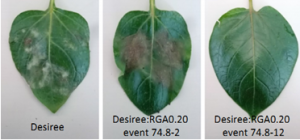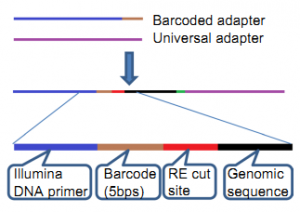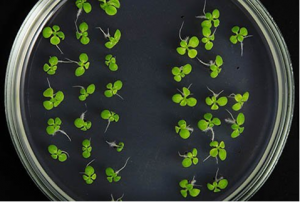Allopolyploidization is a biological process that has played a major role in plant speciation and evolution. Genomic changes are common consequences of polyploidization, but their dynamics over time are still poorly understood. Coffea arabica, a recently formed allotetraploid, was chosen to study genetic changes that accompany allopolyploid formation. Both RNA-seq and DNA-seq data were generated from two genetically distant C. arabica accessions. Genomic structural variation was investigated using C. canephora, one of its diploid progenitors, as reference genome.
Soybean event DAS-444Ø6-6 is tolerant to the herbicides 2,4-D, glyphosate, and glufosinate. An investigation of potential unintended adverse compositional changes in a genetically modified crop is required to meet government regulatory requirements in various geographies. A study to meet these requirements in Brazil was completed demonstrating compositional equivalency between DAS-444Ø6-6 and non-transgenic soybean. This study supplements the extensive literature supporting transgenesis as less disruptive of crop composition compared with traditional breeding methods.
Stem rust caused by the fungus Puccinia graminis f. sp. tritici (Pgt) remains the major disease threat to wheat production. The Sr33 and Sr50 resistance proteins protect wheat against a broad spectrum of field isolates of Pgt and are closely related to the barley powdery mildew-resistance protein MLA10. Like MLA10, Sr33 and Sr50 possess signaling N-terminal domains that self-associate in planta and initiate cell-death signaling from the cytosol.
Breeding of rice cultivars with long-lasting resistance to the rice blast fungus Magnaporthe oryzae is difficult, and identification of new resistance genes is essential. Most of the loci associated with blast resistance against M. oryzae in rice have been identified in controlled environments and with single isolates, and such loci may confer resistance to only a small faction of the M. oryzae strains. In the field, however, rice is commonly attacked by multiple strains. Research is therefore needed to identify loci that confer resistance in the field, i.e., "field blast resistance".
Salt stress is an important abiotic stressor affecting crop growth and productivity. Of the 20 percent of the terrestrial earth's surface available as agricultural land, 50 percent is estimated by the United Nations Environment Program to be salinized to the level that crops growing on it will be salt-stressed. Increased soil salinity has profound effects on seed germination and germinating seedlings as they are frequently confronted with much higher salinities than vigorously growing plants,
Fibronectin contributes to notochord intercalation in the invertebrate chordate, Ciona intestinalis.
Characterization of developmental genes uniquely shared by tunicates and vertebrates is one promising approach for deciphering developmental shifts underlying acquisition of novel, ancestral traits. The matrix glycoprotein Fibronectin (FN) has long been considered a vertebrate-specific gene, playing a major instructive role in vertebrate embryonic development. However, the recent computational prediction of an orthologous "vertebrate-like" Fn gene in the genome of a tunicate,
The broad spectrum late blight resistance gene R8 from Solanum demissum was cloned based on a previously published coarse map position on the lower arm of chromosome IX. Fine mapping in a recombinant population and bacterial artificial chromosome (BAC) library screening resulted in a BAC contig spanning 170 kb of the R8 haplotype. Sequencing revealed a cluster of at least ten R gene analogues (RGAs).
This optimized approach provides both a computational tool and a library construction protocol, which can maximize the number of genomic sequence reads that uniformly cover a plant genome and minimize the number of sequence reads representing chloroplast DNA and rRNA genes. One can implement the developed computational tool to feasibly design their own RAD-seq experiment to achieve expected coverage of sequence variant markers for large plant populations using information of the genome sequence and ideally, though not necessarily, information of the sequence polymorphism distribution in the genome.
How plant roots initially sense osmotic stress in an environment of dynamic water availabilities remains largely unknown. Plants can perceive water limitation imposed by soil salinity or, potentially, by drought in the form of osmotic stress. Rapid osmotic stress-induced intracellular calcium transients provide the opportunity to dissect quantitatively the sensory mechanisms that transmit osmotic stress under environmental and genetic perturbations in plants.
Seed desiccation tolerance (DT) is one of the most fascinating processes of higher plants, and has played a fundamental role in the evolution of land plants. DT allows plant seeds to remain viable in the dry state for years and even centuries. What the key transcription factors (TFs) are that activate the mechanisms that allow plant seeds to maintain cellular and DNA integrity for centuries remains largely unknown.


 Curently online :
Curently online :
 Total visitors :
Total visitors :
